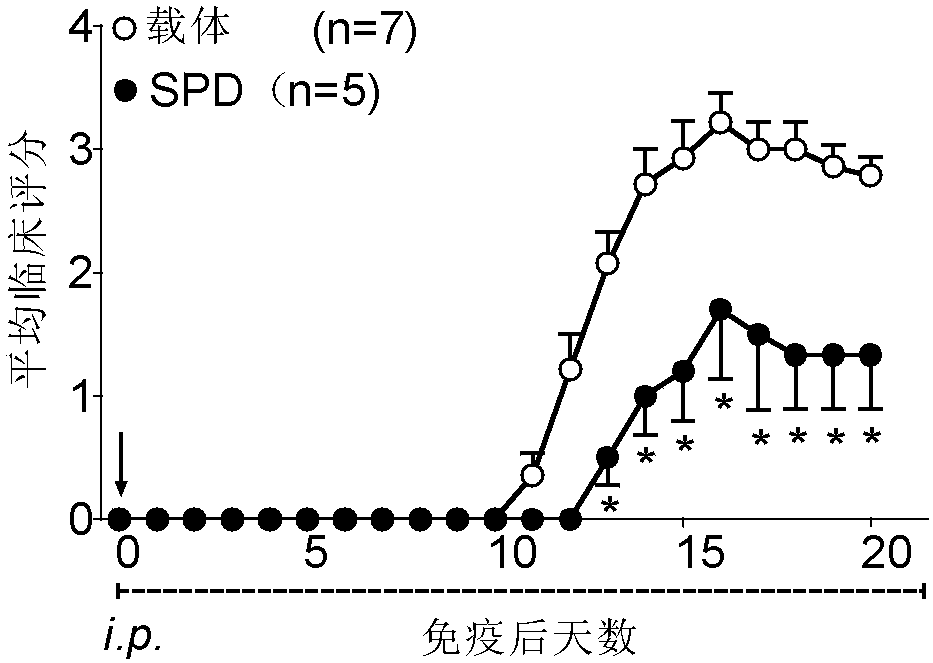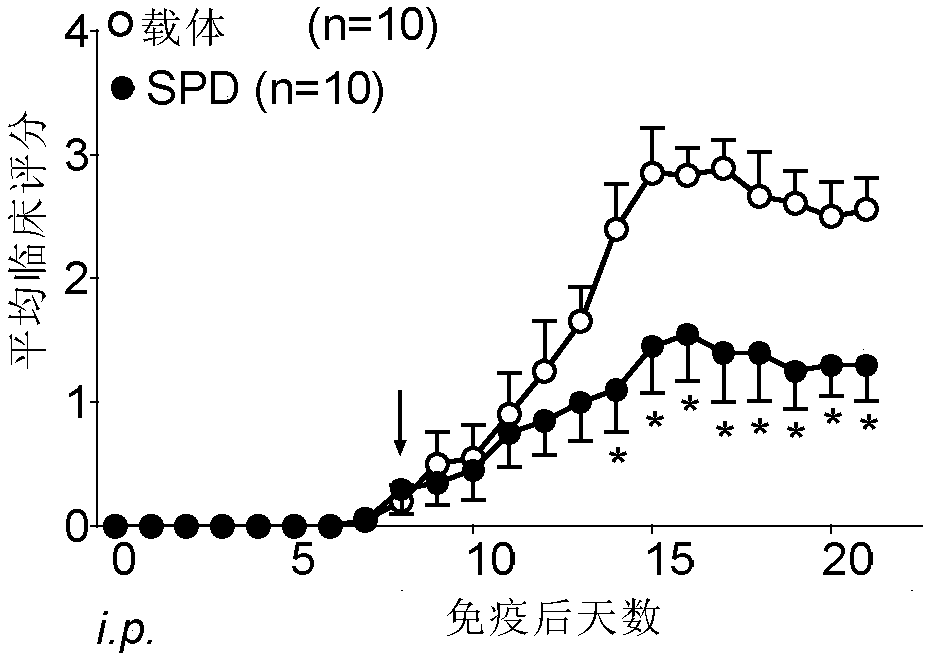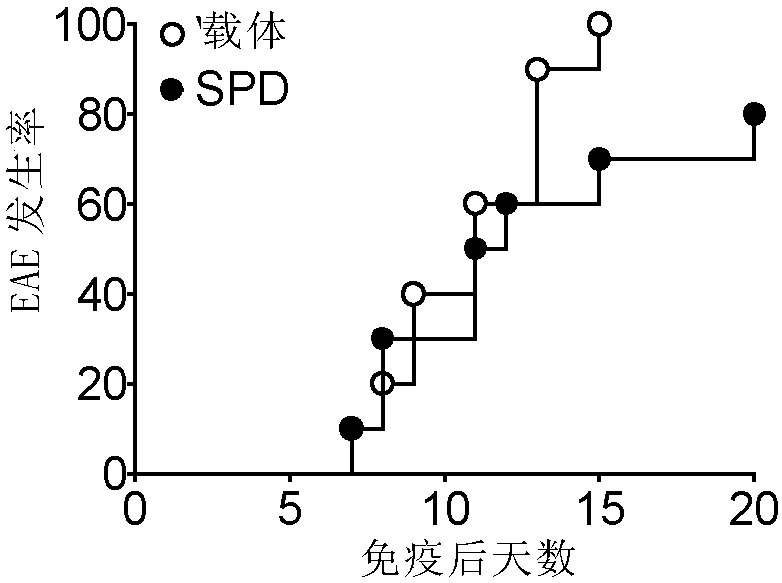Method and composition for regulating and controlling autoimmune diseases through polyamine compound
A technology of polyamine compounds and compositions, applied in the fields of biology and medicine, can solve problems such as bone marrow suppression and side effects
- Summary
- Abstract
- Description
- Claims
- Application Information
AI Technical Summary
Problems solved by technology
Method used
Image
Examples
Embodiment 1
[0100] Establishment of EAE animal model:
[0101] Establishment and administration of EAE model: On the day of immunization (Day 0), each mouse was given 200 μl of emulsified antigen on the back for subcutaneous injection at two points, 100 μl on each side, and each mouse was given 200 μl of PT, and injected into the tail vein. On the second day of immunization, each mouse was given 200 μl of PT again and injected into the tail vein. Prevention and treatment: On the day of immunization, each mouse in the treatment group was given 50 mg / kg of spermidine intraperitoneally, and continued administration and observation; Disease treatment: EAE mice began to develop symptoms, that is, on the 11th day, when the tail of the mice began to appear weak and drooping For administration, mice in the treatment group were given 50 mg / kg of spermidine intraperitoneally, and the administration was continued to observe the experiment; mice in the control group were injected with corresponding P...
Embodiment 2
[0104] Macrophage adoptive transfer EAE model experiment:
[0105] ①Establishment of macrophage adoptive transfer model
[0106] Firstly, the EAE model was induced in the donor wild-type C57BL / 6 mice, and spermidine treatment was given when the disease began to show symptoms (12th day). After the 17th day of immunization, the spleen cells of the two groups of EAE mice were taken out and treated with CD11b CD11b+ macrophages were sorted out by microbeads (Miltenyl Biotech). The macrophages selected from the two groups were divided into 1x10 7 The concentration of cells / ml and the PBS control were injected into the same batch of induced wild-type EAE mice from the tail vein (at this time, the recipient EAE mice were on the 10th day after immunization), and then the three groups of recipients were observed every day. The disease occurrence and development of the mice were scored.
[0107] ②Establishment of the molecular mechanism of adoptive transfer of macrophages
[0108] The...
Embodiment 3
[0110] Adoptive transfer of T cells to establish EAE model:
[0111] The EAE model can be successfully modeled not only by direct immunization with antigens, but also by adoptive transfer of pathogenic T cells. Here, we first induced the EAE model in donor wild-type C57BL / 6 mice. After 10 days, we isolated the spleen cells of EAE mice and stimulated them with 20 μg / ml MOG 35-55 in vitro for three days. , another group was treated with 20 μg / ml MOG 35-55 plus 10 μM spermidine for three days. After 72 hours, CD4+ T cells were isolated and administered to recipient mice 3×10 6 cells / only, and the recipient mice were irradiated with a semi-lethal dose of 400cGy. Each mouse was treated with 200 μl PT on day 0 and day 2 of T cell adoptive transfer to ensure opening of the blood-brain barrier. Then, the occurrence and development of the disease in the recipient mice were observed every day and scored.
[0112] In addition, spleen cells can be isolated from actively immunized EAE ...
PUM
 Login to View More
Login to View More Abstract
Description
Claims
Application Information
 Login to View More
Login to View More - R&D
- Intellectual Property
- Life Sciences
- Materials
- Tech Scout
- Unparalleled Data Quality
- Higher Quality Content
- 60% Fewer Hallucinations
Browse by: Latest US Patents, China's latest patents, Technical Efficacy Thesaurus, Application Domain, Technology Topic, Popular Technical Reports.
© 2025 PatSnap. All rights reserved.Legal|Privacy policy|Modern Slavery Act Transparency Statement|Sitemap|About US| Contact US: help@patsnap.com



